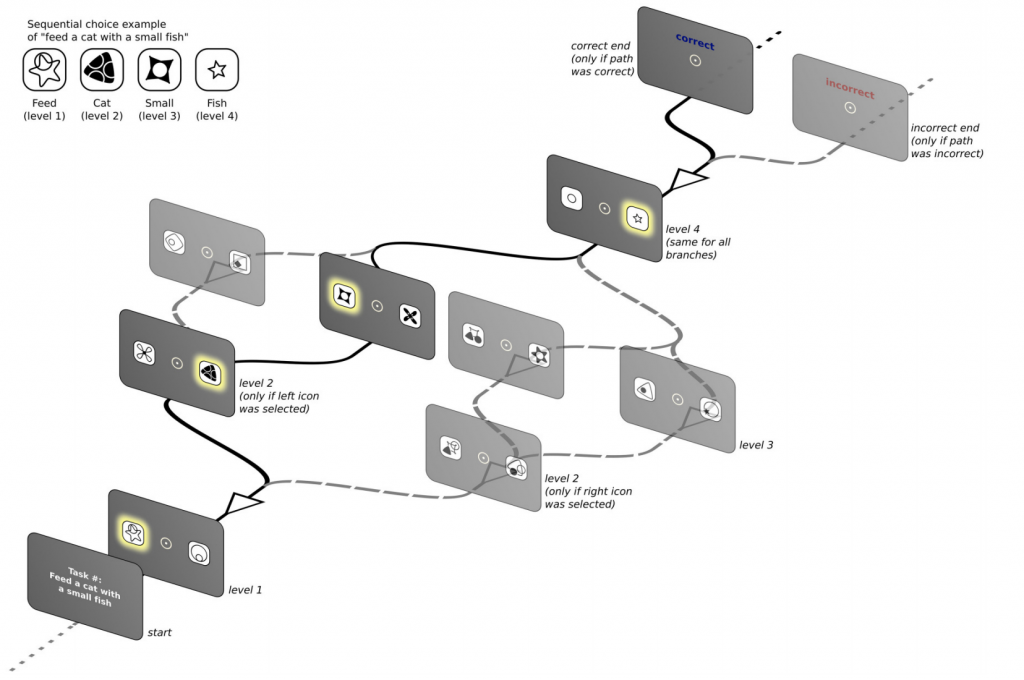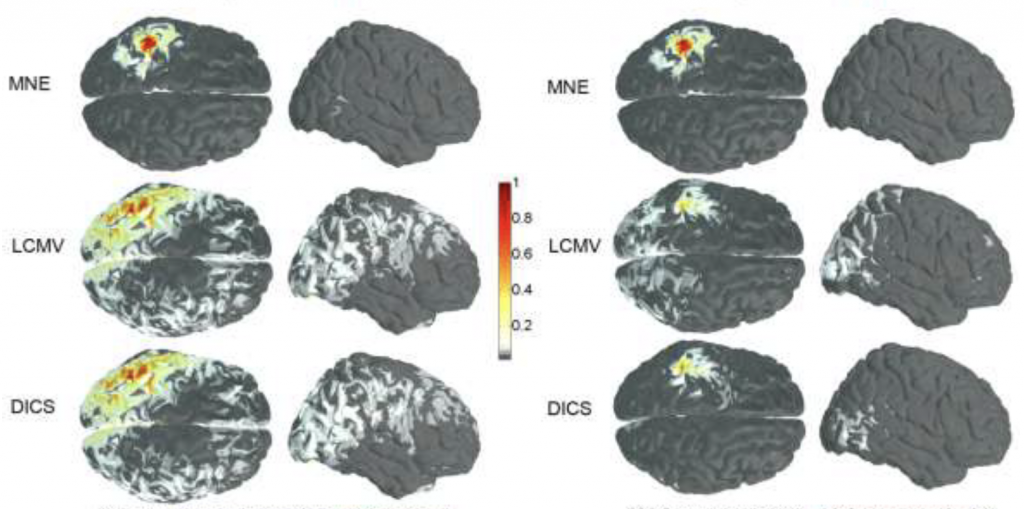We are trying to model search behaviors, analysis of MEG source reconstruction methods.

Modeling search behaviors
Our daily interaction with the world is plagued of situations in which we develop expertise through self-motivated repetition of the same task. In many of these interactions, and especially when dealing with computer and machine interfaces, we must deal with sequences of decisions and actions. For instance, when drawing cash from an ATM machine, choices are presented in a step-by-step fashion and a specific sequence of choices must be performed in order to produce the expected outcome. But, as we become experts in the use of such interfaces, is it possible to identify specific search and learning strategies? And if so, can we use this information to predict future actions? In addition to better understanding the cognitive processes underlying sequential decision-making, this could allow building adaptive interfaces that can facilitate interaction at different moments of the learning curve. Here we tackle the question of modeling sequential decision-making behavior in a simple human-computer interface that instantiates a 4-level binary decision tree (BDT) task. We record behavioral data from voluntary participants while they attempt to solve the task. Using a Hidden Markov Model-based approach that capitalizes on the hierarchical structure of behavior, we then model their performance during the interaction. Our results show that partitioning the problem space into a small set of hierarchically related stereotyped strategies can potentially capture a host of individual decision making policies. This allows us to follow how participants learn and develop expertise in the use of the interface. Moreover, using a Mixture of Experts based on these stereotyped strategies, the model is able to predict the behavior of participants that master the task.
Modeling Search Behaviors during the Acquisition of Expertise in a Sequential Decision-Making Task. Moenne-Loccoz, C.; Vergara, R.; Lopez, V.; Mery, D.; and Cosmelli, D. Frontiers in Computational Neuroscience, 2017.

Analysis of MEG Source Reconstruction Methods
Despite numerous important contributions, the investigation of brain connectivity with magnetoencephalography (MEG) still faces multiple challenges. One critical aspect of source level connectivity, largely overlooked in the literature, is the putative effect of the choice of the inverse method on the subsequent cortico-cortical coupling analysis. We set out to investigate the impact of three inverse methods on source coherence detection using simulated MEG data. To this end, thousands of randomly located pairs of sources were created. Several parameters were manipulated, including inter- and intra-source correlation strength, source size and spatial configuration. The simulated pairs of sources were then used to generate sensor-level MEG measurements at varying signal-to-noise ratios (SNR). Next, the source level power and coherence maps were calculated using three methods (a) L2-Minimum-Norm Estimate (MNE), (b) Linearly Constrained Minimum Variance (LCMV) beamforming, and (c) Dynamic Imaging of Coherent Sources (DICS) beamforming. The performances of the methods were evaluated using Receiver Operating Characteristic (ROC) curves. The results indicate that beamformers perform better than MNE for coherence reconstructions if the interacting cortical sources consist of point-like sources. On the other hand, MNE provides better connectivity estimation than beamformers, if the interacting sources are simulated as extended cortical patches, where each patch consists of dipoles with identical time series (high intra-patch coherence). However, the performance of the beamformers for interacting patches improves substantially if each patch of active cortex is simulated with only partly coherent time series (partial intra-patch coherence). These results demonstrate that the choice of the inverse method impacts the results of MEG source-space coherence analysis, and that the optimal choice of the inverse solution depends on the spatial and synchronization profile of the interacting cortical sources. The insights revealed here can guide method selection and help improve data interpretation regarding MEG connectivity estimation.
The impact of MEG source reconstruction method on source-space connectivity estimation: A comparison between minimum-norm solution and beamforming. Hincapie, A.; Kujala, J.; Mattout, J.; Pascarella, A.; Daligault, S.; Delpuech, C.; Mery, D.; Cosmelli, D.; and Jerbi, K. Neuroimage, 2017.